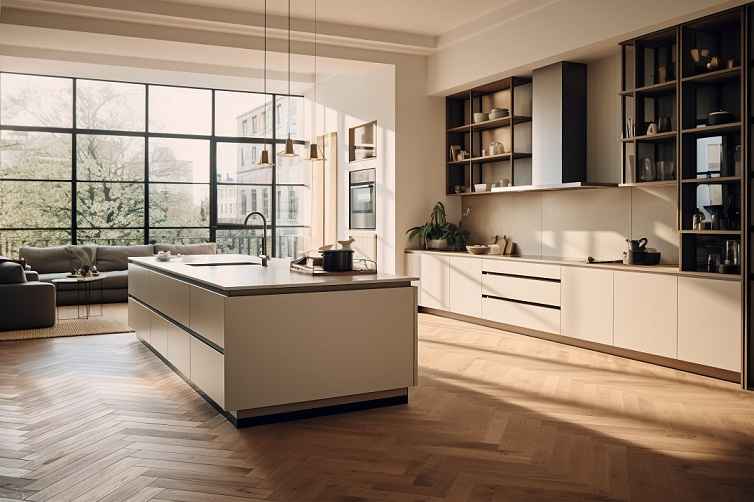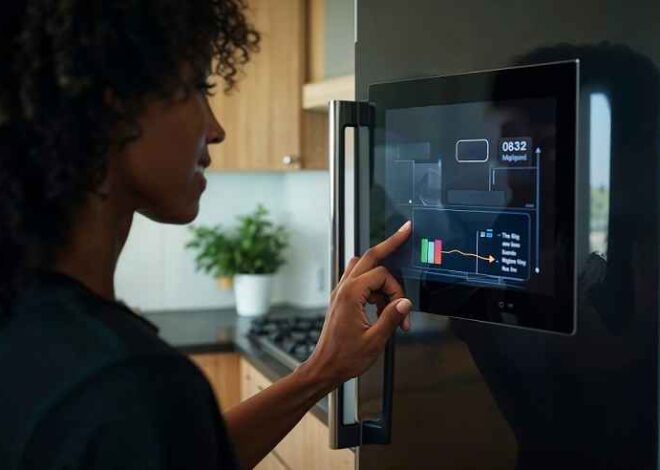
What is the Standard Height for Kitchen Counters?
The kitchen is often considered the heart of a home, a place where families gather, meals are prepared, and memories are made. It’s a space that requires careful consideration to ensure both functionality and comfort, and one of the key elements that significantly impacts both is the kitchen counter.
Kitchen counters are a central feature in any kitchen design, serving as a workspace for preparing meals, a gathering spot for casual dining, and a display area for cherished items. Understanding the standard height for kitchen counters is crucial for creating a kitchen that is both efficient and comfortable to use.
1. Understanding Kitchen Counter Heights
1.1 Definition of Standard Height
The standard height for kitchen counters is generally accepted to be 36 inches. This seemingly simple measurement is rooted in a careful consideration of average human measurements and ergonomics.
1.2 Variations in Counter Height
While 36 inches is the standard, the ideal counter height can vary depending on individual needs and preferences. Factors such as user height, ergonomic considerations, and the intended use of the counter can all influence the choice of height.
For instance, taller individuals might find a 36-inch counter too low, leading to back strain and discomfort while preparing meals. Conversely, shorter individuals might struggle to reach items on the counter comfortably if it’s at the standard height.
2. Importance of Kitchen Counter Height
2.1 Ergonomics and Comfort
The right counter height can significantly enhance the cooking and food preparation experience. A counter that is too low can strain your back and shoulders, leading to fatigue and discomfort, especially during extended periods of work. Conversely, a counter that is too high can put pressure on your wrists and elbows, making chopping, stirring, and other tasks more challenging.
Ergonomic recommendations suggest that the countertop should be 3-4 inches below your elbow height when standing comfortably. This ensures a natural and comfortable posture, minimizing strain on your body.
2.2 Functionality in Kitchen Design
Counter height plays a crucial role in the overall layout and design of your kitchen. It impacts the workflow and efficiency during cooking tasks. A counter that is too low can make it difficult to reach items stored in cabinets above, while a counter that is too high can make it difficult to chop vegetables or knead dough comfortably.
For example, if your kitchen is designed with a large island, the counter height needs to be considered for both seating and food preparation. A standard height counter might be suitable for food prep, but a higher bar-height counter might be better for seating and casual dining.
3. Standard Measurements for Kitchen Counters
3.1 Average Countertop Dimensions
Beyond height, there are standard dimensions for countertop depth and thickness. The standard countertop depth is 25 to 25.5 inches, providing ample space for food preparation and storage. The thickness of countertop materials typically ranges from 1.5 to 2 inches, depending on the material chosen.
3.2 Specific Counter Types
The term “kitchen counter” encompasses various types of counters, each serving a different purpose and having its own recommended height:
- Standard Counters: These are the most common type of counters, found in kitchens for general food preparation, meal serving, and casual dining. The standard height of 36 inches applies to these counters.
- Bar Counters: Bar counters are typically found in kitchens with an island or peninsula and are designed for seating and casual dining. They are generally taller than standard counters, with a height ranging from 41 to 43 inches.
- Island Counters: Island counters can be either standard height or bar height depending on their intended use. If the island is primarily used for food preparation, a standard height counter is recommended. If the island is designed for casual dining or seating, a bar-height counter is more appropriate.
4. Customizing Kitchen Counter Heights
4.1 Factors to Consider
Customizing kitchen counter heights is becoming increasingly popular as homeowners prioritize personal comfort and functionality. When considering customized heights, several factors need to be taken into account:
- Personal Preferences and Physical Needs: The most important factor is your own comfort and ease of use. Measure your elbow height and consider your comfort level when standing at different heights.
- Intended Use: The intended use of the counter will also influence the ideal height. If the counter is primarily used for food preparation, a standard height might be suitable. If it’s designed for casual dining or seating, a bar-height counter might be more comfortable.
4.2 Adjusting for Appliances
Appliance heights can also impact countertop decisions. It’s important to ensure compatibility between countertops and appliances to prevent a mismatch in height.
For example, if you have a dishwasher that is taller than standard, you may need to adjust the counter height accordingly to ensure smooth operation. Similarly, if you’re planning to install a microwave over the counter, consider the height of the microwave and ensure that the countertop is compatible with its placement.
5. Trends in Kitchen Counter Design
5.1 Modern Innovations
Modern kitchen design is embracing innovation, with new materials and finishes constantly emerging. One notable trend is the rise in popularity of adjustable-height countertops. These innovative counters allow homeowners to adjust the height to suit different tasks and users, providing unparalleled flexibility and comfort.
Adjustable-height countertops are particularly beneficial in kitchens where multiple users with varying heights prepare meals or where the counter is used for both food preparation and casual dining. These adjustable counters often feature electric or manual mechanisms that allow for smooth and effortless height adjustments.
5.2 Aesthetic Considerations
Counter height can also affect the overall aesthetics of your kitchen. A counter that is too low can make the kitchen feel cramped, while a counter that is too high can make the kitchen feel overwhelming. Balancing style with functionality is key to creating a kitchen that is both beautiful and practical.
For example, a kitchen with high ceilings might benefit from a slightly higher counter height to visually balance the space. Conversely, a kitchen with low ceilings might look more harmonious with a standard-height counter.
Conclusion
Choosing the right kitchen counter height is crucial for creating a kitchen that is both functional and comfortable. Consider your unique needs and preferences when designing your kitchen, and don’t hesitate to customize counter heights to ensure a perfect fit.
Remember, the goal is to create a kitchen that supports your culinary endeavors, fosters family gatherings, and reflects your personal style.
Further Reading:
What is your preferred kitchen counter height? Share your experiences and insights in the comments below! We’d love to hear about your favorite counter designs and how they work for you.


